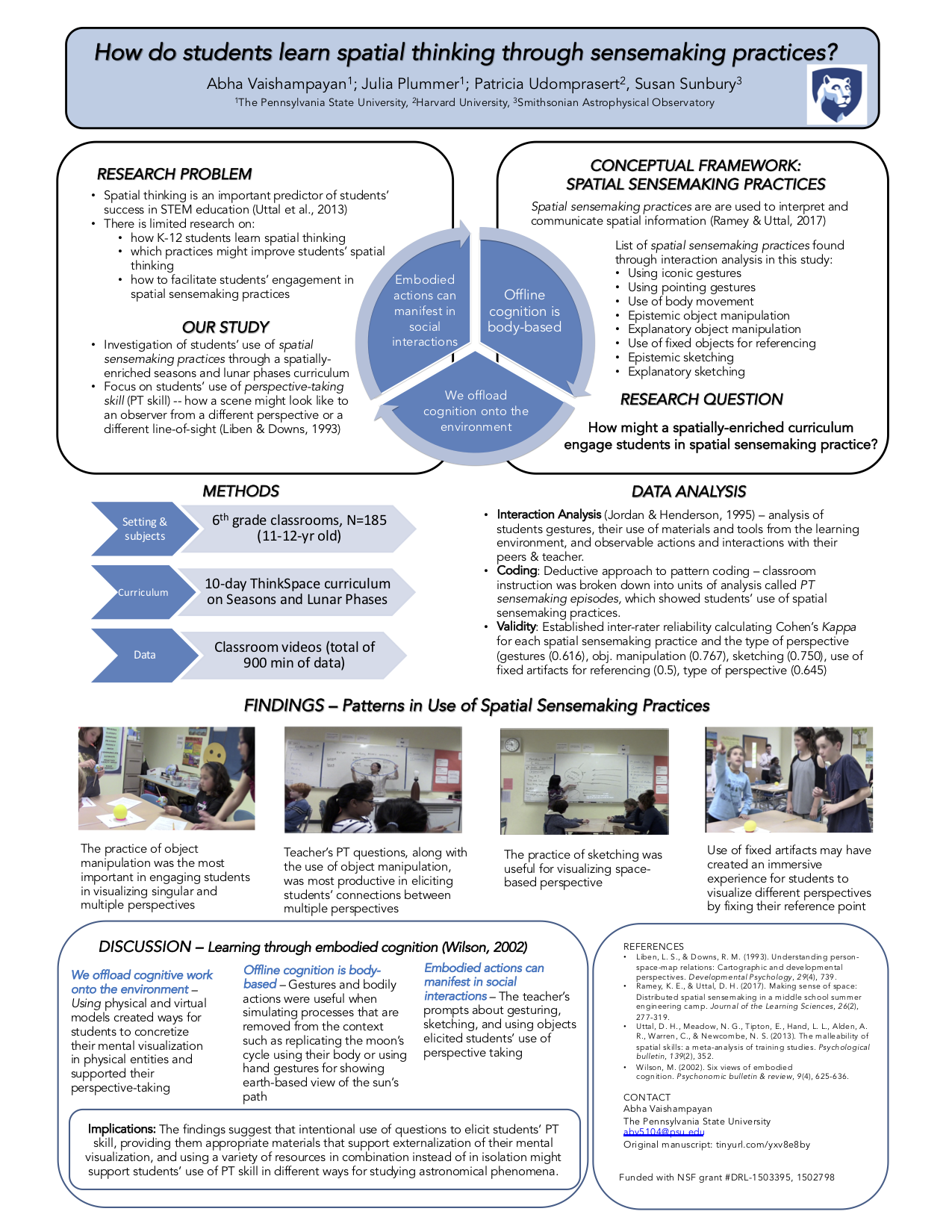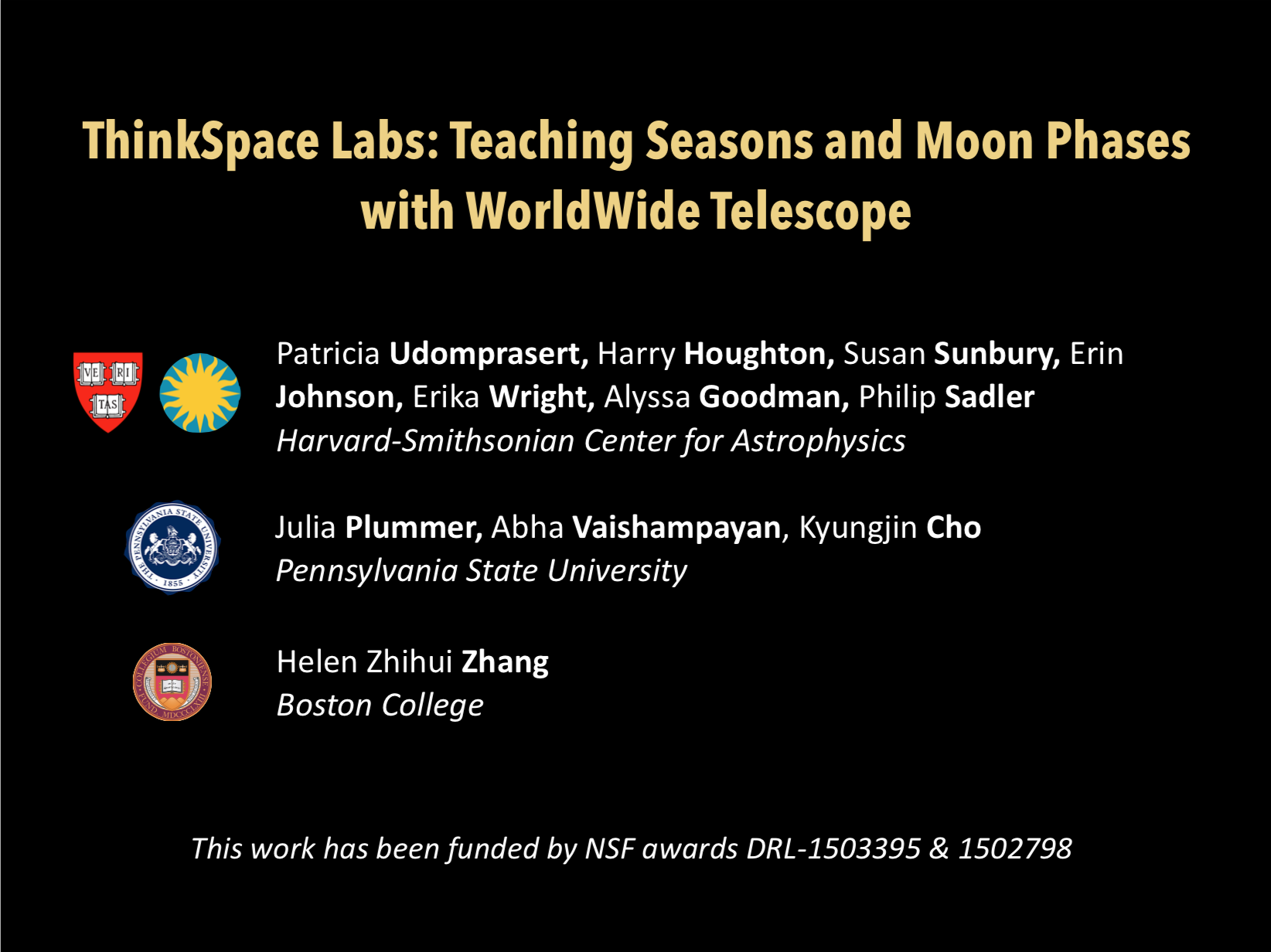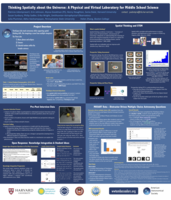 ThinkSpace Advisory Board Meeting with Research Team. September 16, 2016
ThinkSpace Advisory Board Meeting with Research Team. September 16, 2016
Critical breakthroughs in science originated with those scientists' ability to think spatially, and research has shown that spatial ability correlates strongly with likelihood of entering a career in STEM. "Thinking Spatially about the Universe" is an NSF-funded project that developed and studied middle school lab units designed to teach spatial abilities using a blend of physical and virtual models. In "ThinkSpace" labs, students explore 3-dimensional astronomical phenomena in ways that support both understanding of these topics and a more general spatial ability. ThinkSpace addresses two main research questions: 1) How can spatial tasks that blend physical and virtual models be embedded into a STEM curriculum in ways that lead to significant improvements in spatial thinking? and 2) How can practitioners optimize design of interactive, dynamic visualizations for teaching spatially complex concepts? (DRL-1503395)






